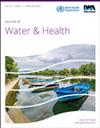磁性纳米材料作为去除水中氟浓度的有效吸收材料:综述
IF 2.5
4区 环境科学与生态学
Q3 ENVIRONMENTAL SCIENCES
引用次数: 0
摘要
工业化和人口的快速增长是水污染的重要来源。地下水和地表水受污染的速度越来越快,这已成为一个严重的问题,并对水资源利益相关者构成了重大障碍。以悬浮物和溶解物形式存在的重金属、有机污染物和无机污染物只是饮用水中可能存在的污染物的一小部分。水中最常见的污染物之一是氟化物,它是多种有毒疾病的罪魁祸首。不同的传统技术,如混凝、离子交换、吸收和膜过滤,都被用来处理水中的氟。然而,磁性纳米粒子(NPs)等纳米材料是替代传统水处理技术的非常高效、可靠、经济和稳定的材料。过去几十年来,人们对应用纳米材料净化饮用水的兴趣与日俱增。本综述文章重点介绍了磁性 NPs(如金属和金属氧化物 NPs)在去除水中氟离子和有机物方面的应用。此外,本节还讨论了在净化饮用水过程中使用磁性 NPs 的特性、益处、缺点和困难。本文章由计算机程序翻译,如有差异,请以英文原文为准。
Magnetic nanomaterials as an effective absorbent material for removal of fluoride concentration in water: a review
The rapid increases in industrialization and populations are significant sources of water contamination. The speed with which contamination of groundwater and surface water occurs is becoming a serious problem and posing a significant obstacle for water stakeholders. Heavy metals, organic, and inorganic contaminants in the form of suspended and dissolved materials are just a few of the contaminants that can be found in drinking water. One of the most common contaminants in the water is fluoride, which is responsible for numerous toxic diseases. Different traditional techniques, for example, coagulation, ion exchange, absorption, and membrane filtrations are being used to dispose of fluoride from water. However, nanomaterials such as magnetic nanoparticles (NPs) are very efficient, reliable, cost-effective, and stable materials to replace traditional water treatment techniques. There has been an increase in interest in the application of nanomaterials to the purification of drinking water over the past few decades. The use of magnetic NPs, such as metal and metal oxide NPs, to remove fluoride ions and organic matter from water is highlighted in this review article. Also, this section also discusses the properties, benefits and drawbacks, and difficulties of utilizing magnetic NPs in the process of purifying drinking water.
求助全文
通过发布文献求助,成功后即可免费获取论文全文。
去求助
来源期刊

Journal of water and health
环境科学-环境科学
CiteScore
3.60
自引率
8.70%
发文量
110
审稿时长
18-36 weeks
期刊介绍:
Journal of Water and Health is a peer-reviewed journal devoted to the dissemination of information on the health implications and control of waterborne microorganisms and chemical substances in the broadest sense for developing and developed countries worldwide. This is to include microbial toxins, chemical quality and the aesthetic qualities of water.
 求助内容:
求助内容: 应助结果提醒方式:
应助结果提醒方式:


